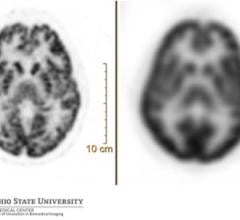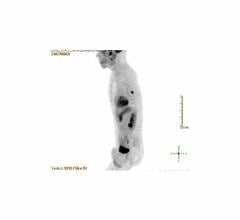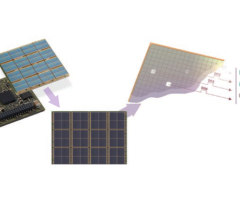An interview with Peter Herscovitch, M.D., chief of the positron emission tomography (PET) department, senior attending ...
PET Imaging
Positron emission tomography (PET) is a nuclear imaging technology (also referred to as molecular imaging) that enables visualization of metabolic processes in the body. The basics of PET imaging is that the technique detects pairs of gamma rays emitted indirectly by a positron-emitting radionuclide (also called radiopharmaceuticals, radionuclides or radiotracer). The tracer is injected into a vein on a biologically active molecule, usually a sugar that is used for cellular energy. PET systems have sensitive detector panels to capture gamma ray emissions from inside the body and use software to plot to triangulate the source of the emissions, creating 3-D computed tomography images of the tracer concentrations within the body.
March 11, 2011 – U.S. Food and Drug Administration (FDA) and Lantheus Medical Imaging Inc. today reached agreement on a ...
March 10, 2011 – The U.S. Food and Drug Administration (FDA) has granted an abbreviated new drug application (ANDA) for ...
Digital technology is opening remarkable opportunities for clinical positron emission tomography (PET) about which ...
March 8, 2011 – Patient-focused technologies that also foster greater collaboration between radiologists and referring ...
March 4, 2011 – For the first time, quantitative—not qualitative—data analysis has demonstrated that time-of-flight (TOF ...
March 3, 2011 – A positron emission mammography (PEM) scanner has been launched at two radiology conferences in Vienna ...
Precision can have an enormous impact on patients. From diagnosis to patient monitoring (see “How Digital PET/CT Can ...
March 3, 2011 – The U.S. Food and Drug Administration (FDA) has cleared a whole-body positron emission tomography (PET) ...
February 8, 2011 — The only direct National Institute of Standards and Technology (NIST) traceable dose calibrator ...
February 4, 2011 – Positron emission tomography (PET) can image metabolic changes following treatment with the protein ...
PET is getting ready to venture outside oncology, cardiology and mainstream neurology. High on the list of new clinical ...
February 3, 2011 – Beginning Feb. 7, 2011, the Centers for Medicare and Medicaid Services (CMS) will reimburse sites ...
January 25, 2011 — Royal Philips Electronics has announced CE marking for the industry’s first commercially available ...
January 21, 2011 — The U.S. Food and Drug Administration's (FDA) Peripheral and Central Nervous System Drugs Advisory ...
Analog is approximate. Digital is specific. Therein lies the fundamental difference between digital PET and its analog ...
January 12, 2011 — Sudden, catastrophic childhood epilepsy is a parent’s worst nightmare, especially in the case of ...
January 3, 2011 – A registered radiopharmaceutical product has received a positive opinion for the mutual recognition of ...
December 20, 2010 – PET CT fusion software is now available on a Web-based viewer. Medweb’s software can be used with ...
Over the past several years, the focus on new technology at the annual Radiological Society of North America (RSNA) ...
December 7, 2010 – Positron emission tomography/computed tomography (PET/CT) could be a useful tool for predicting local ...
December 1, 2010 – One of the world's first whole-body MR/PET systems was introduced at the RSNA 2010 meeting. The ...
November 30, 2010 - Breast-Specific Gamma Imaging/Molecular Breast Imaging (BSGI/MBI) is gaining momentum as a standard ...
November 24, 2010 — Software fusion technologies to support magnetic resonance-positron emission tomography (MR-PET) and ...


 March 22, 2011
March 22, 2011 













